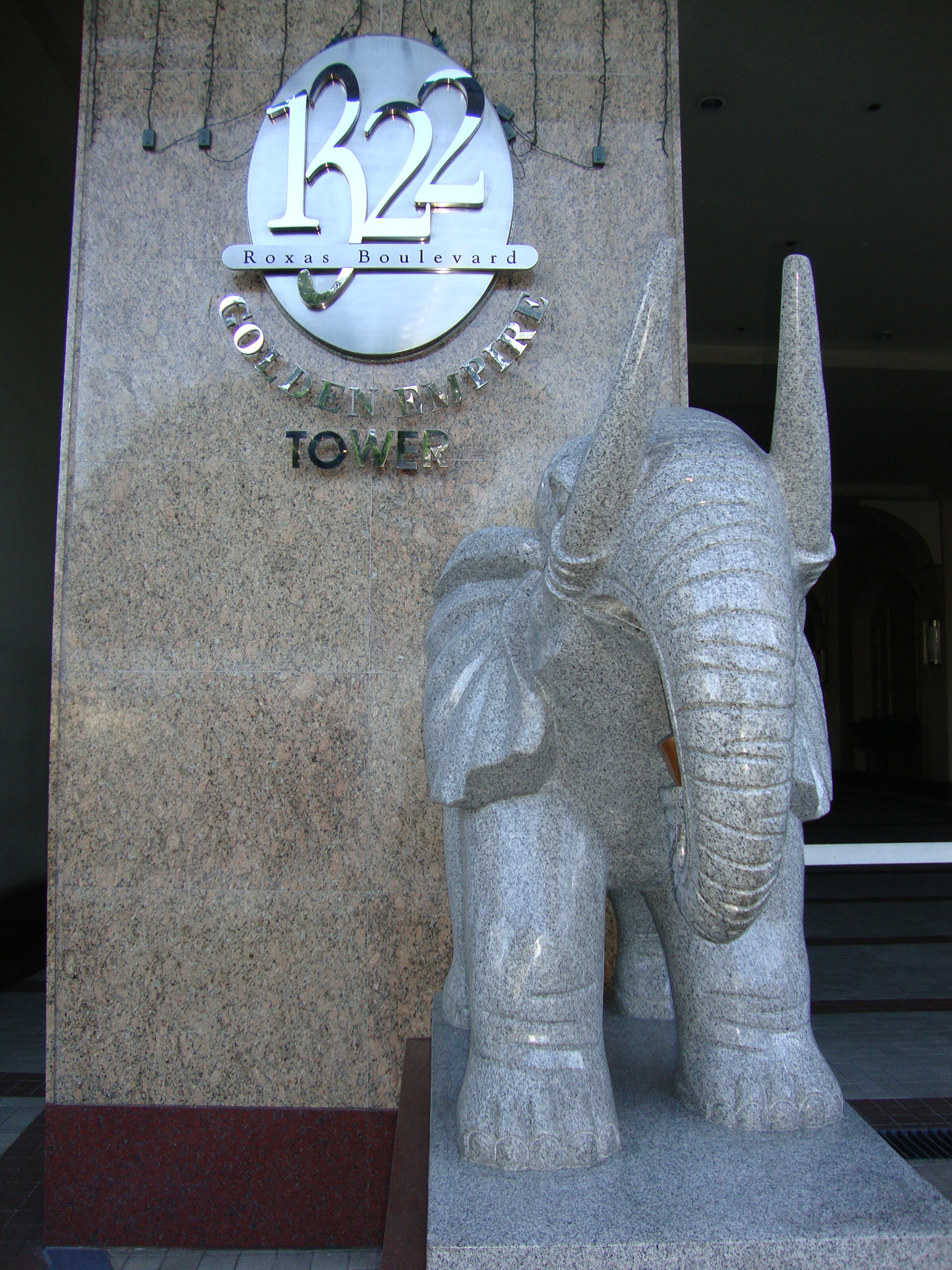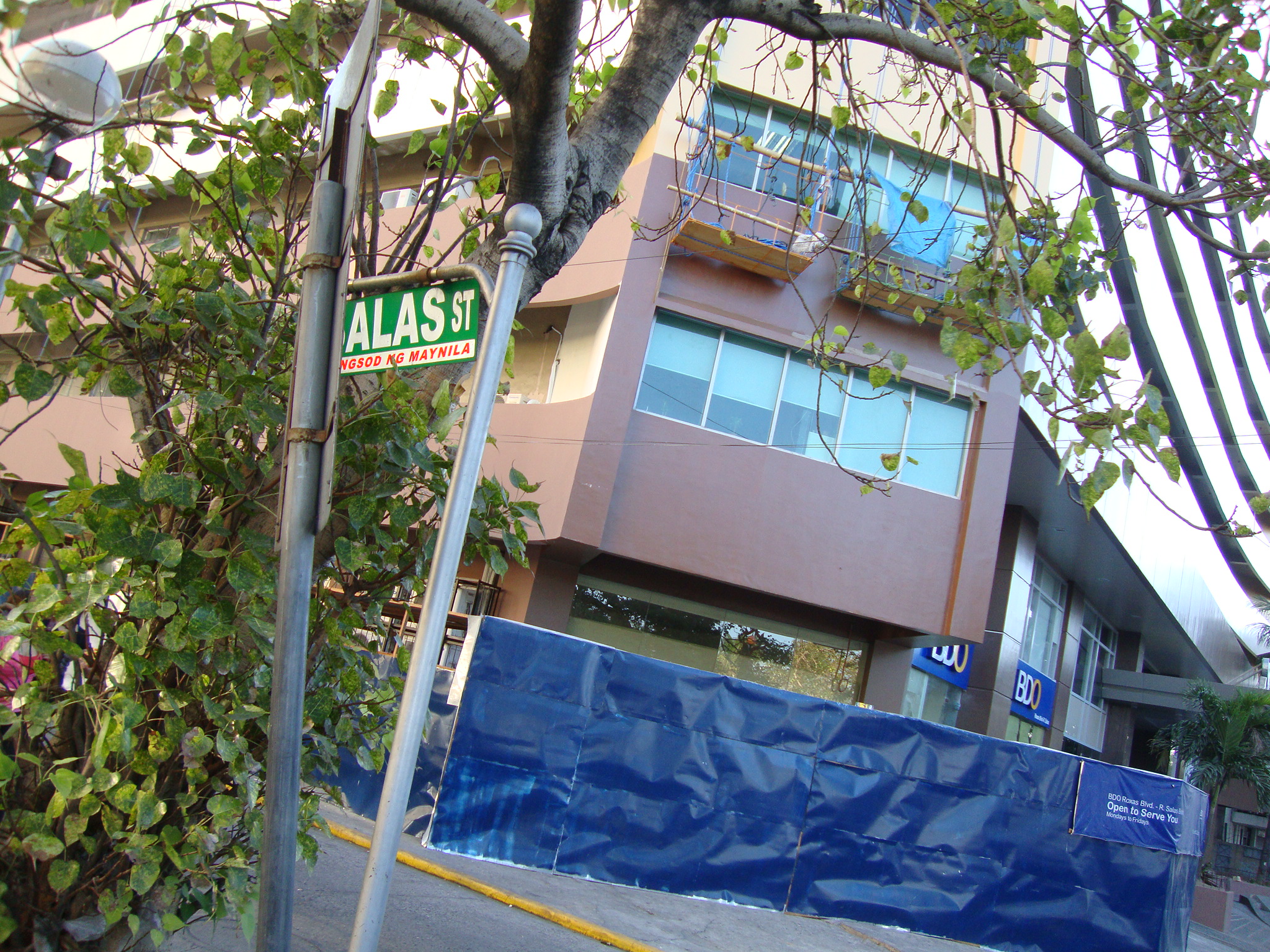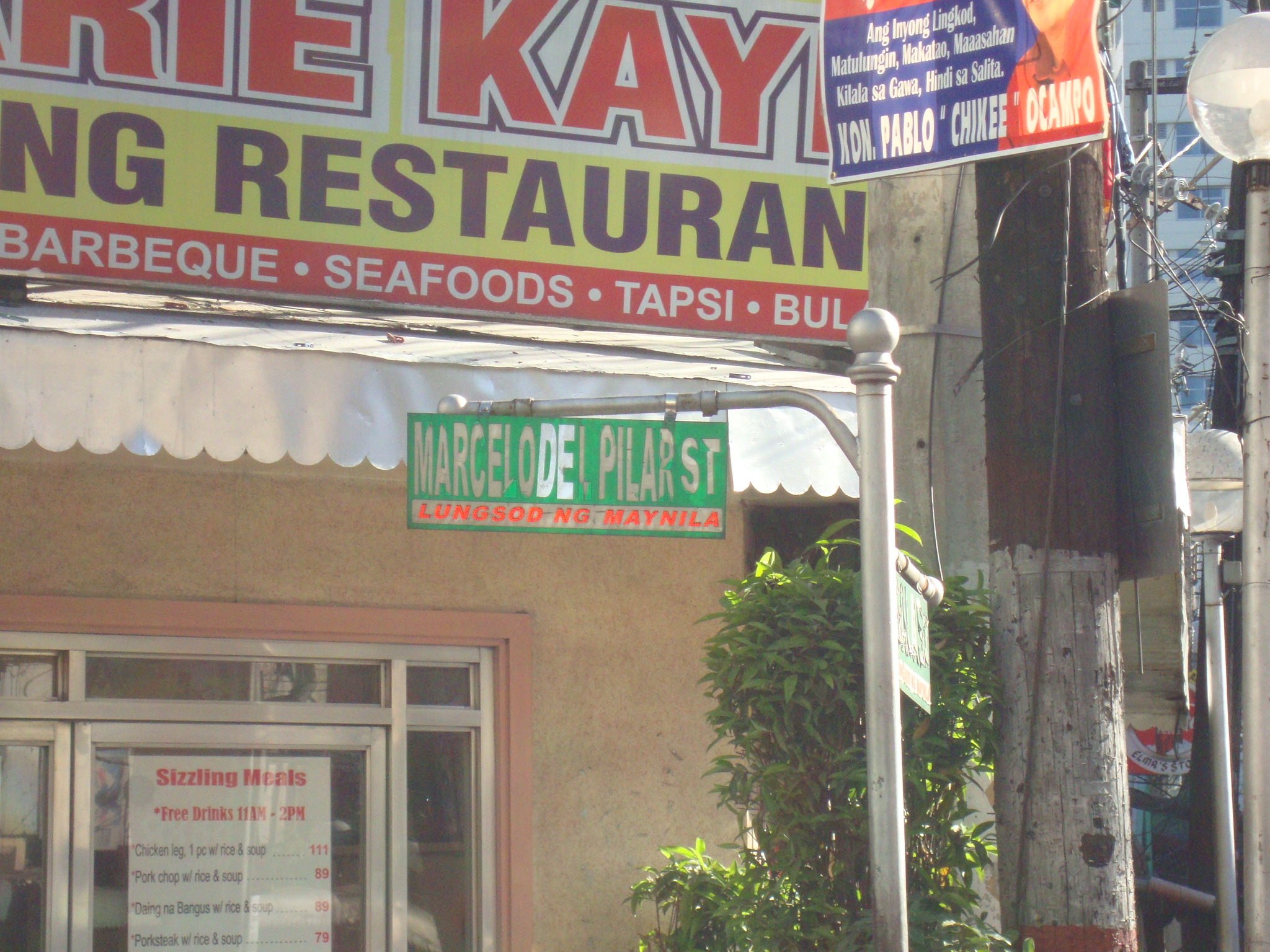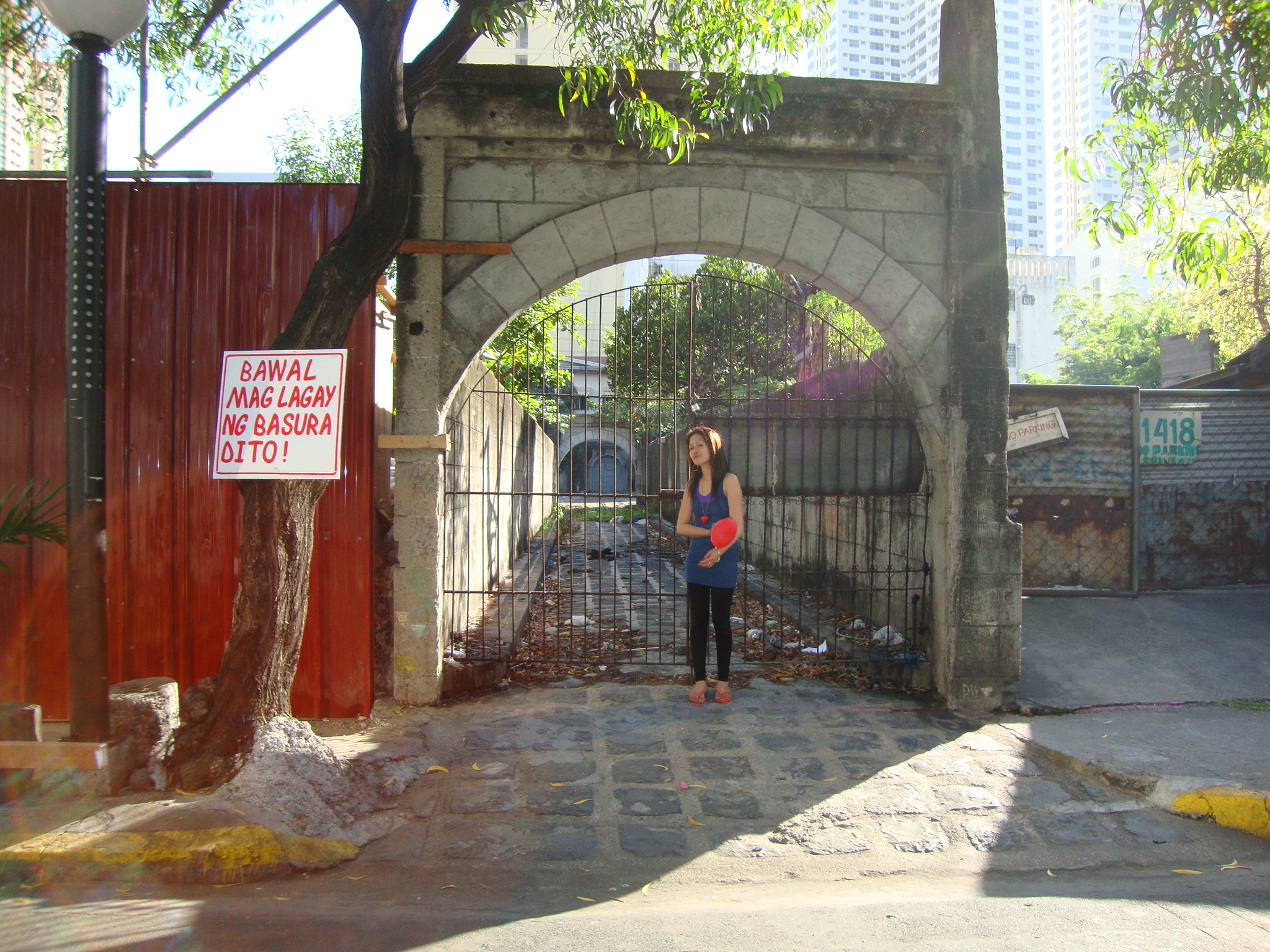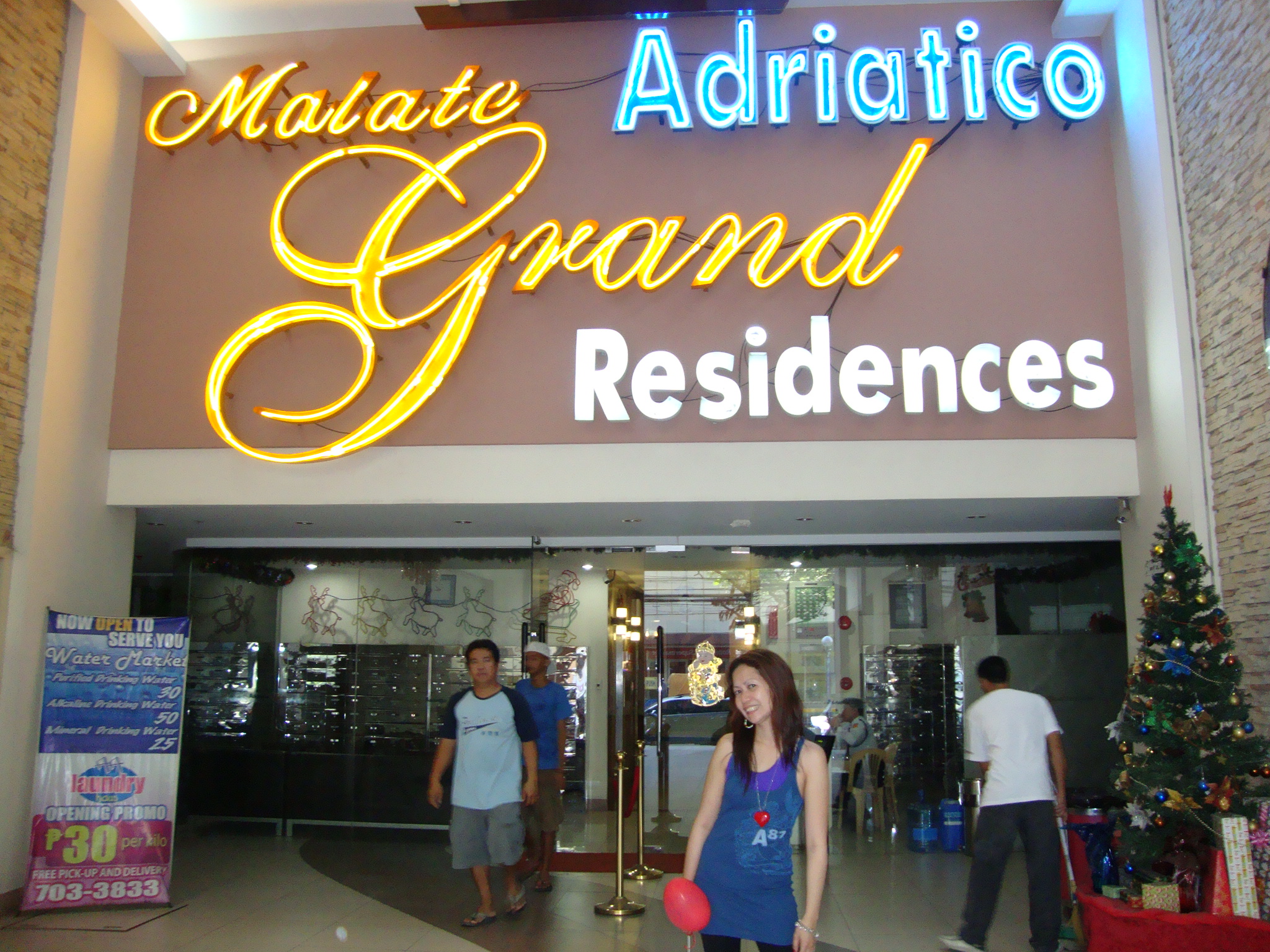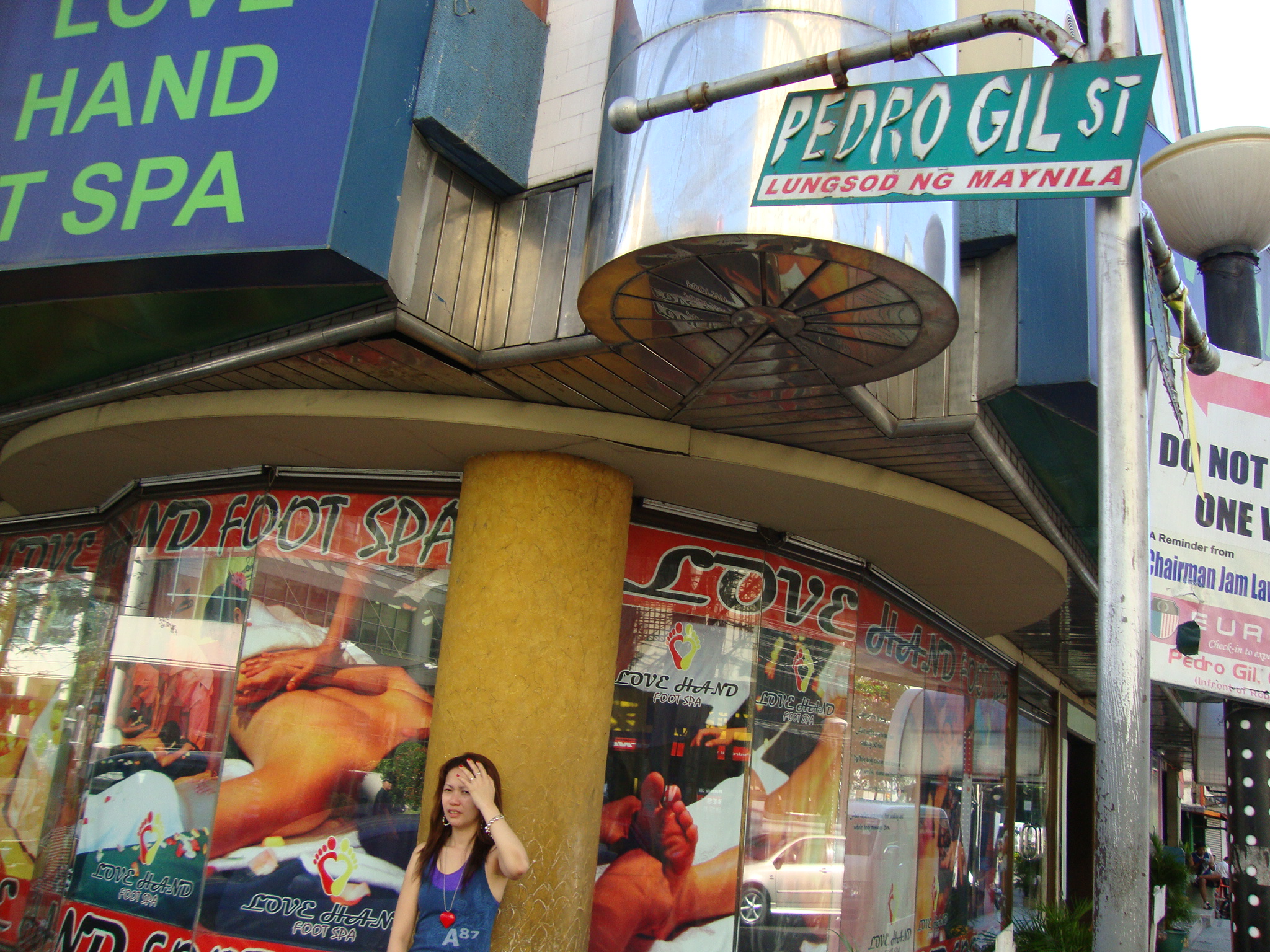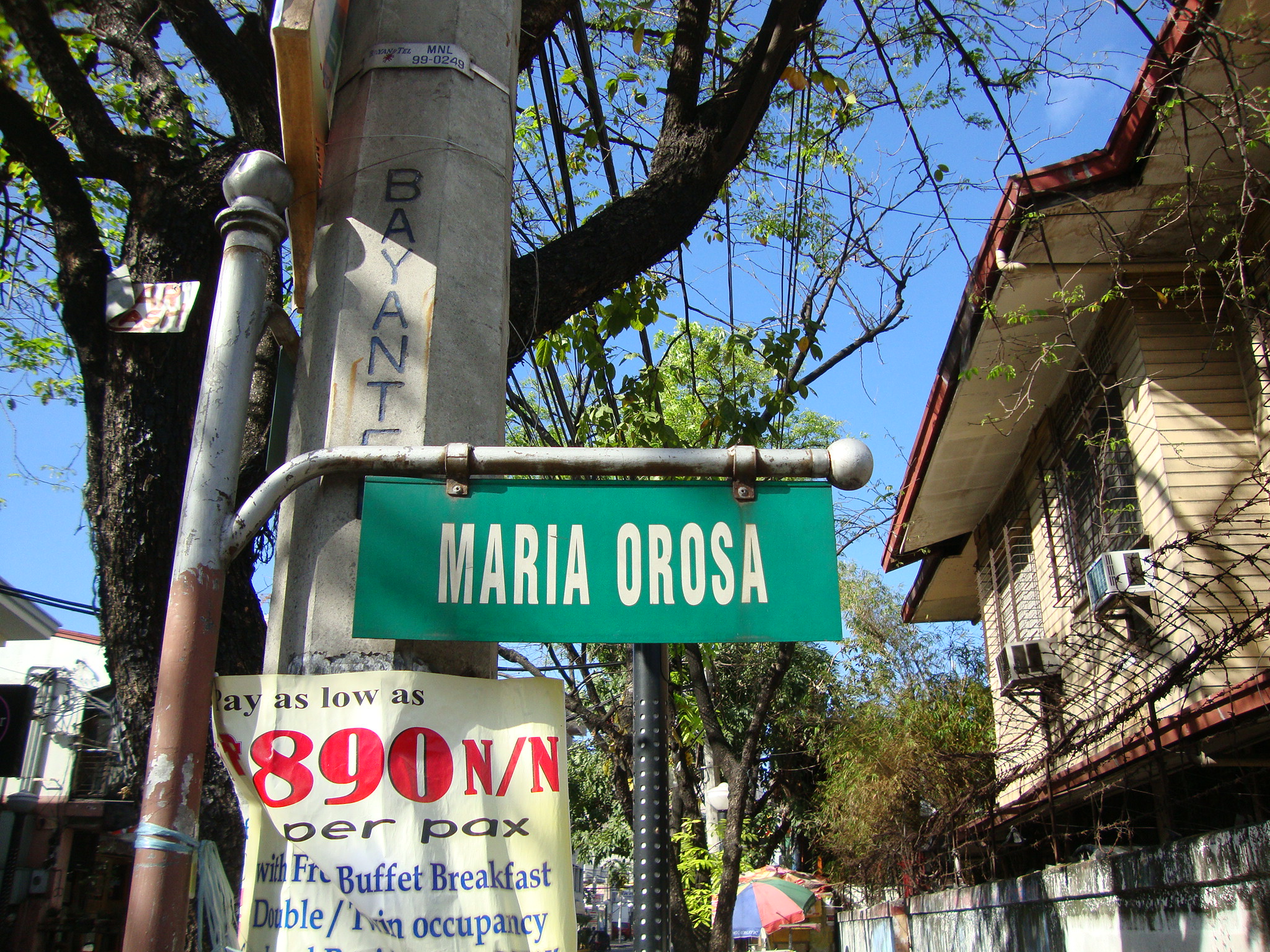For the heritage conservationist, San Nicolás in Manila is a well of opportunities to tap into one’s worth as a cultural worker. It is because this fabled district is filled with decaying centuries-old Filipino houses that are yet to be saved by the government and other concerned sectors. It is but unfortunate that there has been no move yet to salvage these historical treasures from the deathly claws of urbanization and civil apathy. Around three years ago, me and my friends Arnaldo Arnáiz and Will Tolosa visited the place and took pictures of almost all the antique houses. One that stood out from among the rest was the so-called Casa Vizantina.

BEFORE: A picture that I took of a decrepit-looking Casa Vizantina when it was still in the corner of Calles Madrid and Peñarubia, San Nicolás, Manila in 2008.

AFTER: Casa Vizantina restored to its former glory by Jerry Acuzar when we visited it last year in its new home in Las Casas Filipinas de Acuzar in Bagac, Bataán.
It is interesting to note that the popular Casa Manila in nearby Intramuros was modeled after Casa Vizantina. This San Nicolás gem was built in the late 1800s by a certain Don Lorenzo del Rosario. During the First World War, the house was leased out to the Instituto de Manila (former president Manuel Roxas once studied there! today, the school proper is in Sampáloc district and is now known as the University of Manila). When all of Manila was being burned and bombed by the Japanese Imperial Army and the US WASPs, almost all of San Nicolás was miraculously spared. But what the war did not do to this once majestic arrabal the neo-poor did. Casa Vizantina, for instance, was leased out to “various tenants”. Little by little, the house was apparently abandoned by its original owners. Sadly, this once-upon-a-time palace became a castle of various squatter families —a “legacy” of US WASP governance— from the Visayas and elsewhere. Many other old houses in San Nicolás were being toppled down almost every year. And this alarming travesty continues to this day. It is very disheartening to hear that in every regime change, promises of a booming economy are continuously thrown at our faces. But we never hear anything from them about conserving our past treasures such as these San Nicolás houses that could even rival those in Taal, Batangas. The San Nicolás houses have a very big potential to attract tourists especially our Spanish, Latin American, and even Southeast Asian friends (remember that the bahay na bató is a perfect blend of Oriental and Occidental).  Since the dawn of the internet, blogging, and Facebook, we have been seeing so many self-appointed heritage advocates clamoring for the conservation of various heritage sites throughout the country. But the government paid attention to other duties. And hardly do we find any philanthropical action dedicated towards the conservation of our past architectural masterpieces.
Since the dawn of the internet, blogging, and Facebook, we have been seeing so many self-appointed heritage advocates clamoring for the conservation of various heritage sites throughout the country. But the government paid attention to other duties. And hardly do we find any philanthropical action dedicated towards the conservation of our past architectural masterpieces.
Enter Jerry Acuzar in the picture.
This self-made millionaire from Quiapò, Manila has been collecting heritage houses (bahay na bató) from all over the Philippines for several years already. As a young boy, he used to pass by Calle Hidalgo on his way to school. In his growing-up years, he witnessed how the beautiful Filipino ancestral homes found in the said street deteriorated. He then wondered why these houses were not being taken cared of by both the owners and the local government. Years later, he took it upon himself to save prominent but abandoned/semi-abandoned antique houses found all over the country. After buying them from their respective owners, Acuzar had these houses dismantled (his critics use the word “demolition”), had them transported to his seaside hacienda in Bagac, Bataán, and from there resurrected to how they originally looked like. Originally, Acuzar planned to make his Bataán property his own private getaway, but changed his mind. He then opened his 400-hectare seaside resort to the general public. The once private hacienda became known as Las Casas Filipinas de Acuzar.
Casa Vizantina is one of the houses he was able to save from further humiliation, neglect, and possible destruction. It is now back to its former glory, albeit in a different site.
This herculean effort of Acuzar, however, received both praise and negative criticism from various sectors. Indignation against him reached its crescendo last year when the nation learned that he already bought and started dismantling the ancestral home of the national hero’s mother in Biñán, La Laguna. The dismantling was put to a halt when heritage conservation groups led by Dr. Rosauro “Bimbo” Sta. María of the United Artists for Cultural Conservation and Development, Inc. (UACCD) pressured the local government. As of this writing, the impasse between the City of Biñán and the UACCD vs Jerry Acuzar and Gerry Alberto has yet to be resolved. Over the past few months, my ambivalent stance towards the actions of Mr. Acuzar remains to be unresolved as well. Me and my wife had the opportunity to visit his estate late last year. Right after that visit, it dawned upon me that if it is possible to dismantle houses from their original locations, is it not possible to return them there as well? Shouldn’t we just consider Acuzar’s estate as a temporary haven for these houses, as a “safe-keeping” enclave where they will be maintained everyday until their local governments and/or original owners will be able to afford to take them back?
Various hispanistas and conservation heritage advocates such as popular travel blogger Ivan Henares and my Círculo Hispano-Filipino contertulios Gemma Cruz de Araneta and Dr. Fernando N. Ziálcita maintained that heritage structures should remain in situ. As Henares put it, “structures should remain where they are, preserved together with the environment they were built in”. But should these houses continue to remain where they are even if their very own environment starts neglecting them? That will no longer be heritage conservation.
Based on my observation (and experience), perhaps 99% of local governments all over our country do not have heritage conservation on the top of their to-do list. About a decade ago, I was working part-time for the now defunct Nueva Era newspaper which Señor Guillermo Gómez edited. It was the last Spanish-language newspaper in the Philippines. Me and Señor Gómez usually went around Metro Manila taking photos of all ancestral houses that our eyes could catch, for we feared that they will not remain standing in the next few years (before I joined the old man, he was already traveling around the country taking photos of various bahay na bató). We would then publish the photos in the said newspaper (those were the days before blogging, Facebook and Twitter ruled the universe). To our quixotic minds, since we are powerless to physically save those houses from being torn down, we were at least able to record historical memories for posterity’s sake. And browsing through past issues of Nueva Era, our fears proved to be true after all. We noticed that year after year, these Filipino houses continue to be demolished to give way to modernity. No worth at all is given for their historical value. Our patrimony was placed further into the darkest background. A bahay na bató was turned into nothing more but a mere bahay na bató that has no more place in modern times. It seemed as if nobody even cared to save these houses anymore.
But Acuzar is doing exactly that — saving Filipino structures from years and decades of neglect by having them transferred to his estate where they will remain taken cared of for good. Of course, the thought that he will earn money from it should be taken out of the question in the meantime. The fact remains that Acuzar will shell out money regularly to have these ancestral houses he had “snatched away” from neglect and ruin to be well-maintained and preserved for ages. Henares will definitely counter this. He wrote in his blog that the best solution is to educate the masses about the importance and worth of heritage structures found within their locality. I agree, or should agree. But is anybody doing this? With all due respect to Mr. Henares, has he or anybody else offered any concrete steps on how to do this? Who exactly should be responsible to educate the masses? And more importantly, who and how will this project be funded? And will this “education” immediately save the Alberto Mansion? Remember: around 20% of that structure was already dismantled last year. Only an official verdict is keeping it from being totally transported from Biñán to Bagac. Also, the owner, Gerry Alberto, needs no education on heritage; he is a highly educated man, and a distant relative of Rizal himself.
Henares also added that Acuzar should just build replicas in his hacienda instead. Still, building a replica of, say, the Alberto Mansion will not exactly save the Alberto House in Biñán. Gerry Alberto gave up on it already due to financial problems of maintaining it. If he hadn’t sold it to Acuzar, then he would have sold it to other people. And if that ever happened, perhaps a more terrible scenario could have occurred to the house itself. But in Acuzar’s hands, at least future generations will still be able to see it. And, as I have mentioned earlier, there is always the possibility of bringing the whole house back to Biñán once the Biñenses are truly ready to take care of it.
Going back to the Alberto House, what matters here now is how it should be conserved. And Acuzar was able to find a more viable solution. Before the Acuzar purchase, almost nobody ever gave a damn as to what this house is all about. But when the purchase and dismantling commenced, out came the “concerned” activists. Out came the “angry voices”. Out came Facebook pages trying to save the Alberto House. I guess what I hate about this hullaballoo is why do we have to wait for an Acuzar to enter the picture before we TRULY act? Now, it’s almost too late.
I would like to stress out that I am not against movements such as the UACCD. It’s just that their protestations came out a little too late. And although I am saddened by the thought that the spot where the Alberto house still stands might become vacant soon, I admit that I have now become somewhat soft against Acuzar’s ancestral-house purchases because to date only he has provided the most viable solution against the destruction of Filipino ancestral homes. Sometimes, unwanted methods had to be used for the sake of heritage conservation. Such are the methods of Acuzar. So let me make this clear once more: what I dislike about this heritage controversy is the apparent tardiness of Filipinos. They usually make noise only when the trouble has started to make serious damages.
I received some flak against members of the UACCD for my rather unfriendly remarks against their protest rally last year. One member even dared me on my sentiment about not writing anything about Biñán anymore. But let bygones be bygones. Right now, what is important is for all people concerned to save Doña Teodora Alonso’s ancestral house in situ. Besides, Dr. Sta. María himself revealed to me that he and his group has finally made some “strategic plan” to save the Alberto ancestral house. I have yet to interview him to know more about this. It is still worth a try. It might save not only the Alberto Mansion but also all ancestral homes in San Nicolás as well as those found all over the country.
But if this proves to be another failure, then let us all leave Jerry Acuzar alone.
Lastly, if P-Noy is really sincere in attaining everything good for our country’s sake, then may he be able to transfer the still existing military slush funds into saving the Alberto Mansión. With political will, he can do that in just a snap of a finger. Turn bad money into good.
Heritage conservation should not rest solely on non-governmental institutions such as the UACCD. It should be one of our government’s top priorities. Conserving our patrimony will help us map out our future because through it, we will be able to catch a glimpse of our future by reflecting on images of our beautiful past. And glimpses of our beautiful past are still within our midst.
Not everything is lost yet. Just look around; you might be able to see a bahay na bató “shimmering” alone on a street corner…





